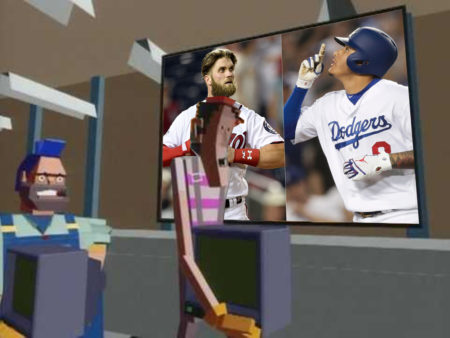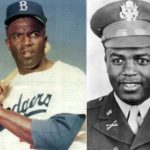Baseball Free Agency: Money for Nothing
 Play Ball!
Play Ball!
The baseball story begins as an outgrowth of money, gambling and the insatiable love of baseball in American cities. It was not a story of money for nothing a decade after the Civil War ended. It began as a saga of good money for great jobs that paid much more than the money paid to day laborers—the jobs that most immigrants held.
Many played baseball for the money. And many day laborers and railroad workers who paid their 25 or 50 cents to crowd into enclosed stadiums to watch baseball games did so not only because they loved the game, but because it was a place they could release steam after the difficulties of everyday life.
They wanted to see their heroes on the field play the game as a real life or death struggle. The fans knew baseball was never money for nothing. But that was before baseball became entertainment fodder. Content in a much bigger system.
The beginning of the National League of Professional Base Ball Clubs—or the National League—started in 1876. Within a few years the owners would institute the Reserve Clause to limit excessive player movement within the league. But the National League and its Reserve Clause could not stop players jumping to the American Association and the other smaller leagues that popped up in the 1880s.
Not until the Major Leagues formed in 1903—with an American and National League—did the Reserve Clause truly begin to limit player movement and the chance for a significant salary increase. Ownership now set the price for player services, since the players had no bargaining power. Their baseball teams owned their productive labor.
Flash Forward: The End of the Reserve Clause
In the late 1960s the players hired Marvin Miller (who should be in the Baseball Hall of Fame, if anyone should) as president of the Major League Baseball Players’ Association. A decision that changed the way money would be redistributed throughout baseball.
Some say that Marvin Miller, an experienced labor attorney, was the culprit, since he was the man who outfoxed Bowie Kuhn, the baseball commissioner at the time—as well as the owners—and freed the players from the onerous burdens of the Reserve Clause.
But he was not the culprit.
Miller worked with Curt Flood—the All-Star center fielder of the St. Louis Cardinals—when Flood refused to recognize the legitimacy of his trade to the Philadelphia Phillies in 1969. Miller took Flood’s grievance all the way to the Supreme Court—where they lost. But this was only the beginning of the war.
Flood became the catalyst for solidarity among the players as they began to battle for free agency and the defeat of baseball’s Reserve Clause.
Miller then outmaneuvered baseball management and a few years later there was no longer a Reserve Clause.
“Money for Nothing. That ain’t working and that’s the way you do it.”
And just like that the owners began competing among themselves for the chance to steal away the best available players—tendering the first million dollar contracts to ‘Catfish’ Hunter, Andy Messersmith and Dave McNally. And soon thereafter, Reggie Jackson—and many more after him.
The money game was just starting.
The change the players had effected was more dramatic than larger contracts. A more gradual—even radical—reassessment of player value had been established. Players would now be evaluated not merely by skills, but by how large their contracts were. Players had become financial investments to be protected, if possible.
Who’s Playing on that Team Now?
So, after 1975 baseball players became commodities. Teams bid on the future production of players. The more they believed a player might produce, the higher they bid. And when there were multiple bids, the personal stock of a player soared. Of course, no one could say if a player’s future production would match his next contract.
Or where a player would end up next season.
This off-season, the big question is not only will there be a $350 million player, but who will pay the tab? And is it a smart move? Will it be Manny Machado or Bryce Harper? We’re still waiting to see.
The contractual terms that Harper and Machado agree to will come to symbolize their baseball identity—and value as a player. As baseball announcers will drone on game after game referring to Machado and Harper next season by their new contracts. If contracts of that sort are offered.
Certainly many fans who watched Alex Rodriguez when he was a Yankee heard him referred to frequently as the $300 million man (even though his contract was actually $317 million over ten years). More recently, whenever Yu Darvish pitched last season, his six-year deal worth $126 million was referenced—as if the money he received was somehow unearned—especially after his season fell apart and it was clear the Cubs had misjudged his value.
Despite the Sophistication of Analytics . . .
Teams still offer fat contacts to the wrong players. Though in today’s game the effect of age 30 or older on a player’s future performance is taken more seriously than it was a five or ten years ago. Because the front end numbers of a contract are usually very different from the player’s efforts at the backend.
Players signed in their late 20s are not immune from poor performance as their contract matures into their age 30 plus seasons. Think Jason Heyward, Chris Davis, Mike Hampton, Pablo Sandoval and look at the mayhem Zack Greinke’s contract has caused the Arizona Diamondbacks who still lack payroll flexibility, to appreciate the negative side of age 30.
For the younger players, the more value attached to a player the more pressure there is to cultivate the product (especially younger talent), develop it properly, and insure a reliable, if not spectacular return on investment (ROI).
No wonder teams have tried to ensure that their fragile investments pay off by carefully monitoring their player’s every twist, toss and turn—especially if the player is a pitcher.
Despite teams’ careful ministrations, injuries continually affect player performance. It seems one cannot pitch in the major leagues if one has not undergone at least one Tommy John surgery and many position players suffer injuries that slow their progress.
The Yankees have suffered through two years of first baseman Greg Bird’s fleeting moments of promise, marred by inexplicable foot injuries that may have been the cause of his dismal production. One wonders how much more patience the Yankees will show? Or will Bird become another Nick Johnson? Or Kevin Maas.
Has it Really Become Money for Nothing?
Ten years after free agency, in 1985, Dire Straits debuted their hit, “Money for Nothing.” It dealt with MTV, a new phenomenon 35 years ago, but the refrain could apply as easily to baseball today.
“Money for Nothing and chicks for free. Now that ain’t working, that’s the way you do it.”
Why? Because big money has changed the game of baseball. It’s as though the game has been raffled off to the highest bidder. And sports television won.
Television has valiantly tried to squeeze the leisurely pace of a baseball game into their unmanageable two hour time slots but, failing to condense the game, has been forced to allocate three hours to a baseball game—an eternity in prime time.
Imagine an ESPN television exec chastising the Commissioner of Baseball, Rob Manfred.
Manfred, speed the goddamn game up. No, even faster. No more intentional walks. Forget about any more mound visits. Use Apple watches like Dick Tracy might have, had they been available when he was fighting crime. Apple will sponsor the games if you do. That’ll be very good for us. More profits. Manfred there’s also too much time between pitches. Quicken up the pace. How? Electrify the batter’s boxes. Place wires in the chalk to create a force field so no batter can step out.
And how about tiebreakers? (Sounds like tennis?) And what do you think of only five pitching changes a game? Or situational lefties can be used every other Tuesday, except when it rains on Sunday. Baseball has to change, Rob. Immediately. It’s entertainment, not sports. Remember that. We’re paying for entertainment. Fucking entertainment. It’s no longer the national pastime. It’s two hours on Sunday night. Don’t forget that.
The problem is that as contracts become fatter and fatter, will players exert less and less effort? There are no John McGraw’s or Ty Cobb’s in today’s game. Even the Chase Utley play in the 2015 National League Championship Series against the Mets has been legislated out. What incentive will motivate Manny Machado to play harder after he’s signed a ten-year guaranteed contract? Why hustle? Where is the incentive to run the bases hard? Pitch eight innings rather than six?
Don Drysdale where have you gone? Need I even mention the name of the great Pete Rose?
Have we crossed the line? Is money in baseball really for nothing? Is that how Machado sees it? After all, Machado has already pretty much admitted, “that ain’t working and that’s the way you do it.”
ESPN better hope not. Or the games are going to take even longer.

























